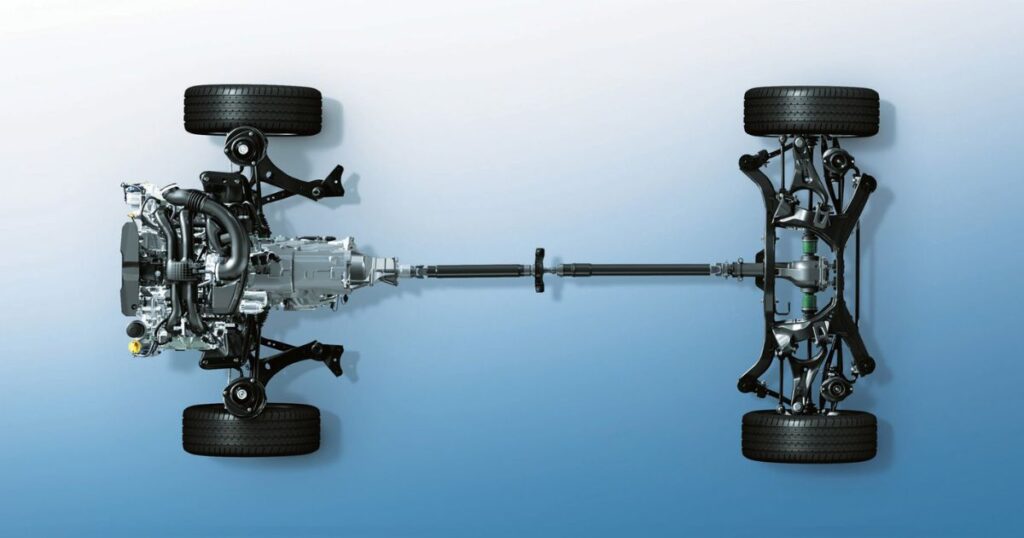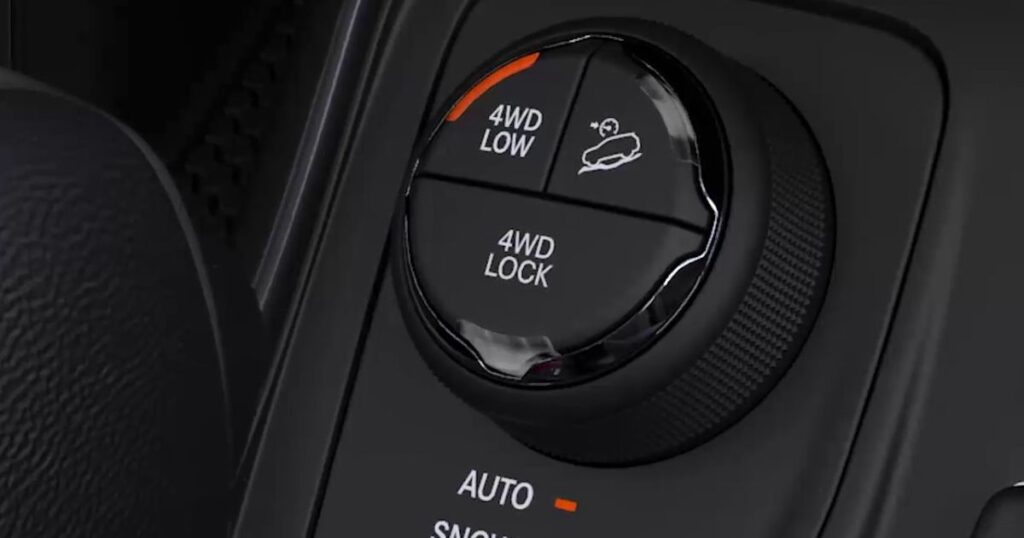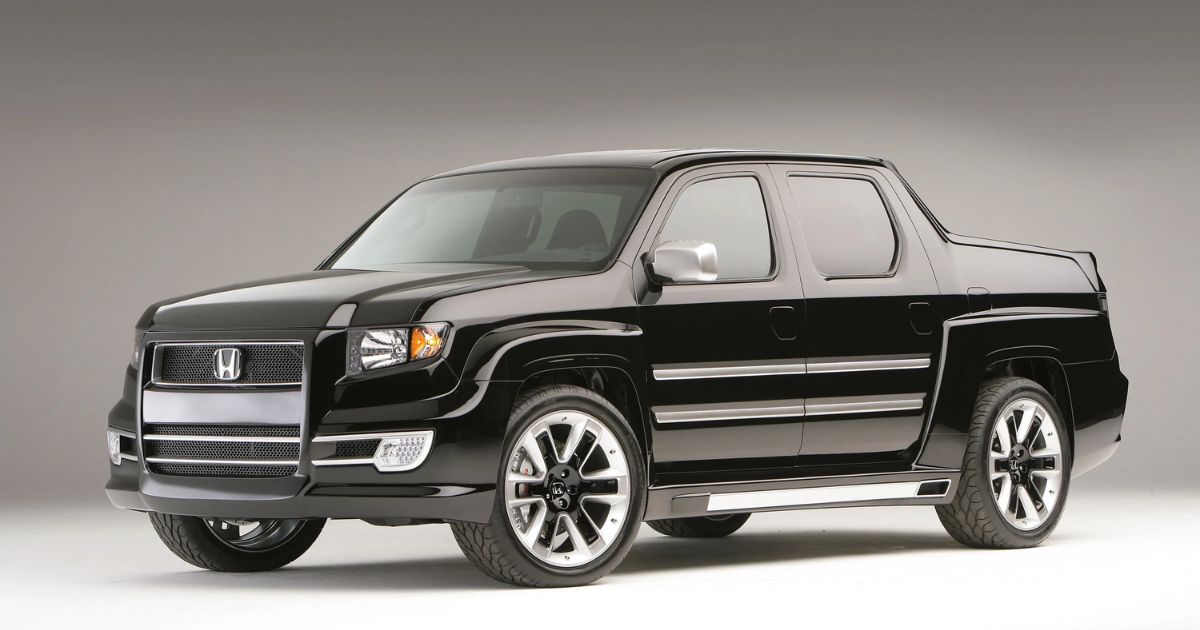Getting stuck with tires spinning out in the deep mud is a horrible feeling. I remember it clearly during an overlanding trip last spring when I failed to switch my SUV into 4WD Low upon approaching a sloppy bog. As the mud crept up to the running boards, then doors, I wished I better understood the capabilities of my vehicle’s 4WD system. Situations like this demonstrate the importance of knowing when to properly use 4WD High versus 4WD Low settings for traction.
4-Wheel Drive (4WD) equipped vehicles power both front and rear axles to optimize traction during slippery conditions or off-road driving. Two main modes exist 4WD High for added mobility in mud, snow and hills while maintaining momentum, and 4WD Low which maximizes torque for extreme low-speed rock crawling and steep terrain. Matching conditions to either 4WD High or 4WD Low is critical to prevent getting stuck. Let’s explore a detailed comparison including engagement guidance:
Overview of 4-Wheel Drive (4WD) Systems
4WD systems are common on pickup trucks, SUVs and dedicated off-road vehicles. By powering all four wheels, 4WD enhances mobility compared to normal 2WD:
- Engages both front and rear axles to deliver torque when needed
- Allows inter-axle slipping to maintain steering control
- Two available modes optimize for condition (see below)
- Driver-controlled engagement via console or shifter
Keep in mind that 4WD systems are different from All Wheel Drive (AWD) configured on some crossover SUVs and cars:
- AWD runs full-time without driver input
- 4WD allows shifting between 2WD and 4WD modes
- AWD focuses on enhancing everyday on-road traction
- 4WD excels during off-road, mud and steep grades
What is 4WD High (4H) Mode?

4WD High delivers power to all four wheels simultaneously while allowing some inter-axle speed differences:
- Sends power to both front and rear axles
- Wheels can spin at different rates when needed
- Provides added traction during slippage
- Ideal for mild off-roading like dirt trails
When to Use 4WD High
Engage 4WD High for:
- Icy, snowy or wet pavement
- Driving over dirt, gravel, sand or mud
- Forest roads, trails and uneven terrain
Basically anytime you need more traction and mobility.
4WD High Advantages
- Enhanced mobility on loose surfaces over 2WD
- Additional control in slippery conditions
- Less likely to get stuck than 2WD
4WD High Disadvantages
- Slightly worse fuel economy due to increased friction
- Handling issues when turning on high traction surfaces
- Potential gear damage on dry pavement
Avoid extended use of 4WD High on dry roads since the system isn’t designed for high speed traction and handling situations.
What is 4WD Low (4L) Range?
4WD Low utilizes additional gearing to maximize torque output for extreme low speed off-roading:
- Further gear reduction beyond 4WD High
- Maximizes torque for rock crawling
- Maintains traction during slippage
- Crawl speeds under 5-15 mph
When to Engage 4WD Low
Common 4WD Low usage cases:
- Large rocks, tree roots and deep ruts
- Steep inclines or declines
- Deep mud pits, erosion channels and water
- Towing heavy loads up hills
- Extreme low speed off-road driving
4WD Low Advantages
- Delivers tremendous torque control under 10 mph
- Excels in extreme terrain at very low gears
- Enables slippery hill descent at a crawl
- Less wear on driveline parts
4WD Low Disadvantages
- Top speed limited to low gear range (5-15 mph)
- No cruise control ability
- Tough shifting into and out of 4WD Low range
- Significant driveline binding risk on pavement
You should only engage 4WD Low for extreme off-road situations where momentum isn’t necessary.
Related Post: “How To Remove Oil Filter?“
Anecdote About My 4WD Low Lesson
I’ll never forget trudging through a muddy bog in my 4WD SUV near Moab last year. Despite using 4WD High, my tires spun fruitlessly, spewing mud in all directions.
As the mud enveloped my running boards, then the bottom of my doors, I knew I was in trouble! Attempting to back out only made me sink deeper as water seeped into the floor pans.
I sure wish I had known to instead shift into 4WD Low which delivers extreme torque and traction control for situations just like this muddy quagmire. It took a tow strap from another vehicle passing by to finally free me.
So check your ego, know your vehicle’s true off-road capabilities, and use 4WD Low whenever attempting low-speed crawls through extreme mud or up steep, slippery inclines.
Key Differences Between 4WD High Versus 4WD Low
| 4WD High | 4WD Low | |
| Gearing | Standard gear range. | Additional low range gears. |
| Speed | Normal driving speeds. | Extremely low crawl speeds only |
| Traction | OK for loose/slippery surfaces. | Maximum torque for rocks, hills, mud. |
| Purpose | Mixed on/off road driving. | Severe off-roading only. |
| Shifting | Smooth transitions. | Difficult shifting. |
In summary:
- 4WD High: Additional traction for highway rain/snow and mild off-roading
- 4WD Low: Extreme torque and control under 10 mph for hard obstacles
Make sure you come to a complete stop before shifting between these transfer case modes.
Important Considerations
Here are some key considerations when deciding whether to use 4WD High or 4WD Low for traction:
Road Conditions
- Icy, wet or loose surfaces benefit from 4WD High
- Large rocks, deep ruts and mud require 4WD Low
Vehicle Capabilities
- Approach/departure/ground clearance angles
- Lift kits and larger tires = more off-road potential
Tire Pressure
- Air down for mud, sand and snow
- Re-inflate after reaching paved roads
Legal Access Restrictions
- Stay on approved roads and trails
- Environmental closures might limit off-roading
Driver Training
- Lack of experience risks damage or rescue
- Consider guides for technical terrain
Recovery Gear
Always carry equipment like:
- Tow strap
- Traction boards
- Shovel
- Full size spare tire
- Recovery winch
- Communication devices
Shifting Procedure: 4WD High ⇄ 4WD Low

Follow this typical process when shifting between transfer case modes:
- Stop fully with engine idling
- Shift transmission into Neutral
- Select 4WD High or 4WD Low range on console
- Shift transmission back into gear
- Proceed slowly watching traction
- Come to complete stop when shifting out of 4WD Low due to difficult disengagement
Some vehicles require an additional step like electronically selecting Neutral range for the actual shift between High and Low modes after stopping. Refer to your owner’s manual for specifics.
Important: Practice shifting into/out of 4WD Low range occasionally to prevent jamming later on. Master this skill before facing challenging terrain!
Safety Precautions
When operating in 4WD High or 4WD Low modes:
- Adjust speed down appropriately
- Focus attention ahead of vehicle’s path
- Smoothly accelerate and brake
- Avoid sharp turns leading to rollovers
- Use spotters when off-camber or ascending steep grades
Carry the following gear in case you get stuck:
- Tow strap – attach to frame or recovery hook point, not bumpers!
- Traction mats – reinforced pads to drive onto
- Shovel – dig ruts under tires
- Communication equipment – satellite texting devices excel in remote terrain
Common Mistakes
Avoid these errors when driving in 4WD:
- Failure to air down tire pressure for soft terrain
- Attempting to use cruise control in 4WD Low range
- Neglecting to stop fully when shifting modes
- Getting excessive speed in 4WD Low leading to driveline damage
- Driving too fast for conditions causing skidding or loss of control
Perform regular practice engaging 4WD High and 4WD Low on easy trails to learn capabilities before tackling advanced obstacles.
Maintaining Your 4WD System
Like any vehicle, follow the manufacturer’s maintenance guidance:
- Frequent oil changes
- New fluids for differentials and transfer case
- Replacefilters
- Check U joints
- Clean/lubricate universals
More intensive use requires more frequent intervals:
| Component | Normal Service Interval | Frequent Off-Road Interval |
| Engine Oil | 5,000 – 7,500 miles | 3,000 miles |
| Differential(s) | 30,000 miles | 15,000 miles |
| Transfer Case | 50,000 miles | 25,000 miles |
| Axle Fluids | 5 years | 2-3 years |
| Filters | Per maintenance guide | Reduce by 50% |
Watch for leaks around gaskets and seals which can leave you stranded without vital lubrication. Carry spare oils/coolants based on your planned route.
Common Problems
- Binding: Stiff shifting into/out of modes. Run through all ranges regularly.
- Leaks: Seal wear causes fluid loss. Spot staining on components.
- Overheating: Low cooling flow stresses systems on long grades.
- Noises: Grinding, clunking or whining noises signal problems. Get inspected immediately.
Getting stuck out on the trails is zero fun (as I learned!) – make sure your 4WD system stays maintained properly.
Conclusion
Whether cruising country backroads in the snow or tackling Moab boulders on vacation, using the proper 4WD High or 4WD Low mode enhances traction and control. Familiarize yourself with the engagement procedures, capabilities and ideal usage for each setting.
4WD High works great for keeping momentum across gravel, sand or muddy patches when moderate slick conditions arise. It provides helpful mobility in loose terrain.
4WD Low excels during precise slow-speed maneuvering across rocks or up steep pitches when traction gets extremely dicey. It delivers methodical control.
No single drive mode functions optimally across all scenarios. Evaluate current needs, know your vehicle’s limitations and respect trail regulations. Carry adequate gear/supplies in case plans go sideways in a rut!
Finally, regularly maintain your 4WD system to prevent getting immobilized by mechanical issues far from help. That sinking feeling in the pit of your stomach as the truck shutters to a halt isn’t fun to experience trailside due to neglecting simple service.
Learn how to use both 4WD High and 4WD Low properly so you can cover more ground while avoiding disaster! Confidence comes from competence gained by training.

Alexander Quinn is the author behind Filterabout.com. Known for expertise in diverse topics, Quinn’s content on the website reflects a versatile knowledge base catering to various interests.



![Jynxzi Age, Net Worth, Career[2024]](https://filterabout.com/wp-content/uploads/2024/05/Who-Is-Shanin-Blake-Age-Wiki-Parents-Dating-Net-Worth-300x148.jpg)
![Jynxzi Age, Net Worth, Career[2024]](https://filterabout.com/wp-content/uploads/2024/05/Jynxzi-Age-Net-Worth-Career2024-300x148.jpg)


![Kutty Surumi Net Worth, Bio, Age[2024]](https://filterabout.com/wp-content/uploads/2024/05/Kutty-Surumi-Net-Worth-Bio-Age2024-300x148.jpg)



![Jynxzi Age, Net Worth, Career[2024]](https://filterabout.com/wp-content/uploads/2024/05/Who-Is-Shanin-Blake-Age-Wiki-Parents-Dating-Net-Worth-150x150.jpg)